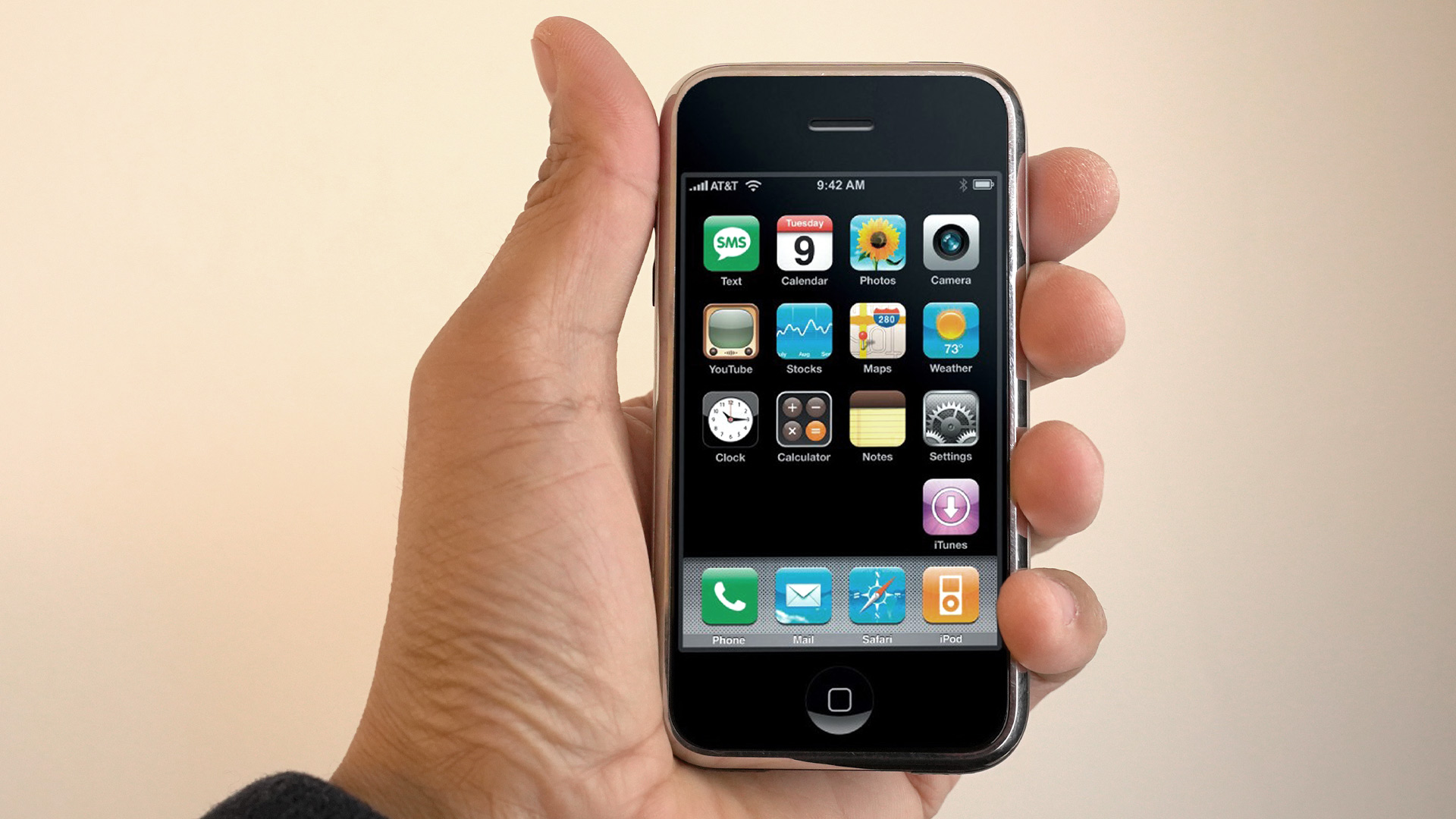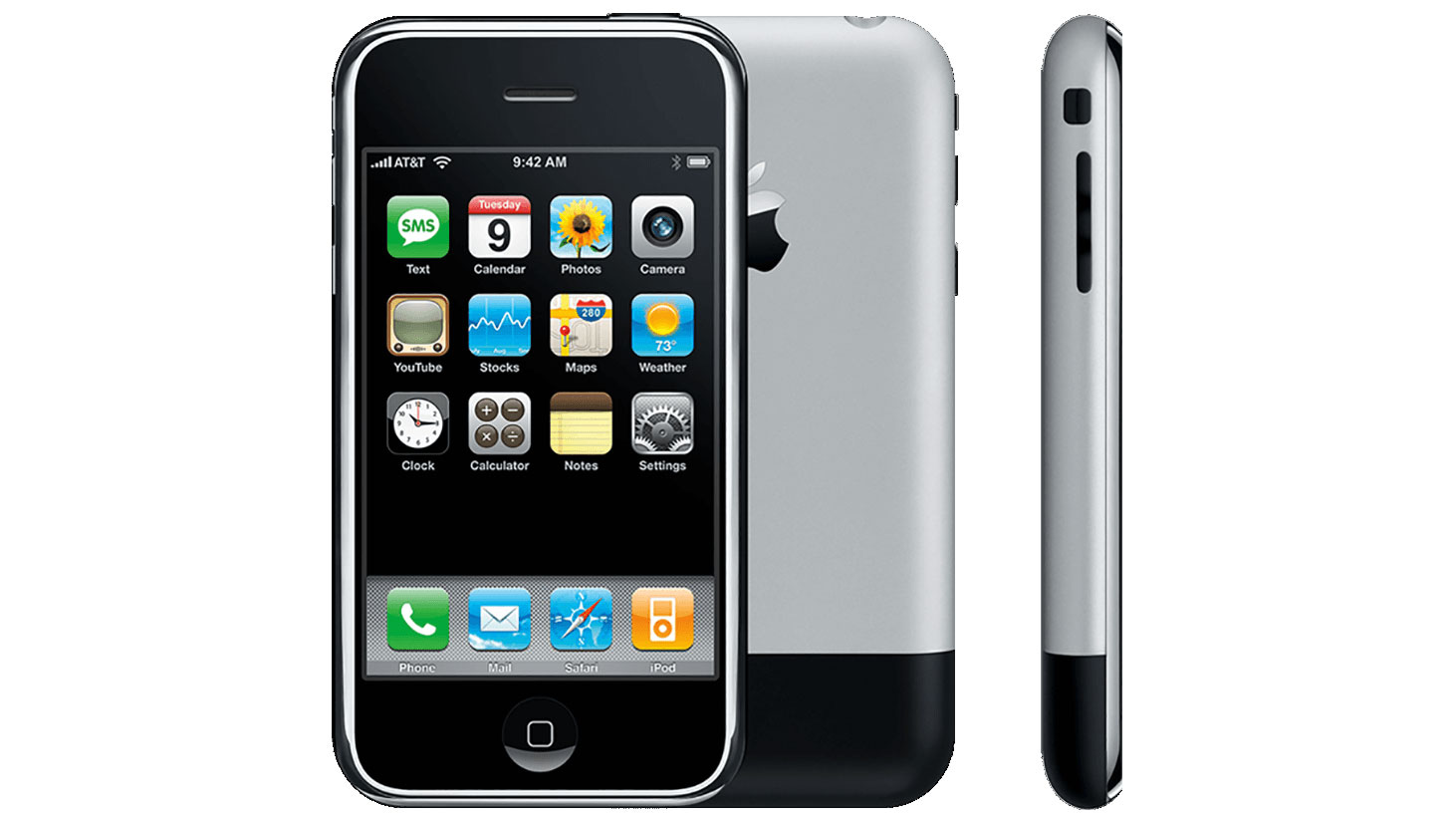The first iPhone wasn't really a smartphone
15 years later, we forget that the 'God Phone' wasn't exactly a deity

At 15, the iPhone is a remarkably composed and self-assured teenager. Few objects have seen as much adulation and refinement over their relatively short lifespan. Perhaps that's because of the intense scrutiny the iPhone faced even before Apple co-founder and CEO the late Steve Jobs took the stage at Macworld to unveil it on January 9, 2007.
The original iPhone - sometimes referred to as "The Jesus Phone" for its potential to save and elevate an entire industry - was a very big deal. And a big risk. No other phone manufacturer, not the then dominant BlackBerry or T-Mobile with its hugely popular Sidekick, had taken such a big swing.
We'd never seen a handset with such a big touch screen (3.5-inches!) and virtually no buttons, save the home button and power and volume on the sides. It ran the risk of being the most inscrutable device of the century. If you handed it to someone, they might stare at it and then you, pleading, "What the hell do I do with this?"
There are things we forget about that first iPhone:
Lost history
It was not an amazing phone. It supported just one carrier in the US: AT&T and it could take up to six steps before you could make a call.
The iPhone was a fantastic iTunes companion, offering the most virtual way ever to manage your music library, but it had a terrible little speaker.
It played videos but they looked awful on the small, low-resolution screen.
Get daily insight, inspiration and deals in your inbox
Sign up for breaking news, reviews, opinion, top tech deals, and more.
Apple initially limited the iPhone to a handful of built-in widgets for things like Stocks, YouTube, Weather, and the Web but forbid the installation of third-party native apps. It supported, instead, Web apps. For some, the inability to install apps in the way BlackBerries and Palm phones already could made the iPhone less than a true "smartphone." Apple smartly reversed this decision by the summer of 2008 when it opened the App Store.

My favorite bit of trivia is that, even after the official iPhone launch, Apple did not own the "iPhone" brand name. Networking company Cisco acquired it in 2000 along with the long-forgotten company InfoGear. Few knew up until the week after launch that Apple'd been engaged in intense negotiations with Cisco for years.
I remember us all joking about what Apple might end up calling its device if it couldn't keep the iPhone name: "Apple Phone" was an obvious choice, but "Steve Phone" made us laugh. A month later, the two companies settled.
I wasn't immune to the intense interest surrounding the device. While I didn't attend Macworld, I tracked the launch and then launched my own quiet campaign to be among the first to hold and review one of the phones. I was Editor in Chief of PC Magazine, so I thought I had a chance.
I did not.
First encounter
In July of 2007, though, Jobs chose four tech journalists to seed with the new device: David Pogue (New York Times), Steve Levy (Newsweek), Walter Mossberg (Wall Street Journal), and Ed Baig (USA Today). I was acquainted with all of them but none of them well enough to call up and say, "Hey, can I see that phone?"
What's more, Apple's rules for these early review units were strict. While the journalists were expected to carry around and review the original iPhone, they were also supposed to keep it out of sight and the hands of anyone else (I still remember having the first iPad and being afraid to let my family touch it).
It's hard to review a product if you keep it in your pocket all the time, so Ed Baig can be forgiven for pulling the iPhone out of his pocket at an industry event (this was a couple of days after the review embargo lifted but before general availability). I swear, I smelled the phone before I saw it and made a beeline to the estimable tech scribe.
"Is that the iPhone?"
Ed stared at me blank-faced for a moment.
Then his face broke into a huge smile and he acknowledged that he was holding "The Jesus Phone."
When I asked if I could hold it, Baig complied, but his eyes were focused on my fingers as they moved over the smooth plastic, glass, and metal body. In my head, I heard the whisper, "So, so sexy."
I pressed the home button, since that seemed like the obvious thing to do, and then started tapping on icons. I think I hit Weather, Safari, Maps, and Photos. Ed said nothing as I intuitively navigated the widgets, websites, and pinching and zooming photos.
After a few minutes, I carefully handed the phone back to Ed, who silently slipped it back into his pocket.
The illicit act was risky for him and world-altering for me.
It changed everything
For all the things that this iPhone wasn't (great phone, excellent media player, a true smartphone), I then knew it was a paradigm shift. Anyone who touched this device was bound to feel similarly, that it was intuition in physical form.
There has never been a phone quite like it and everything that followed it would bear its influence.
In an industry where multiple platforms and device styles existed, each in its own orbit, the universe of cellphone design realigned itself to, at least for a time, put the iPhone at its center.
15 years later, the iPhone remains a premier brand among rivals, but it no longer owns the innovation curve alone. What Apple did was reinvent the phone, but it also paved a clear path for competitors who also shed buttons and built ever-bigger multi-touch displays.
Every smartphone on the planet owes a debt to that first iPhone but the focus of smartphone innovation into a single design language (big screen, thin, glass and metal chassis, excellent cameras) has led to a tech sector that's far less interesting than it was in 2007 when Steve Jobs took the stage and reinvented a product category.
[Updated to reflect the fact that Ed Baig did not break his embargo agreement with Apple when he handed me the first iPhone]

A 38-year industry veteran and award-winning journalist, Lance has covered technology since PCs were the size of suitcases and “on line” meant “waiting.” He’s a former Lifewire Editor-in-Chief, Mashable Editor-in-Chief, and, before that, Editor in Chief of PCMag.com and Senior Vice President of Content for Ziff Davis, Inc. He also wrote a popular, weekly tech column for Medium called The Upgrade.
Lance Ulanoff makes frequent appearances on national, international, and local news programs including Live with Kelly and Mark, the Today Show, Good Morning America, CNBC, CNN, and the BBC.